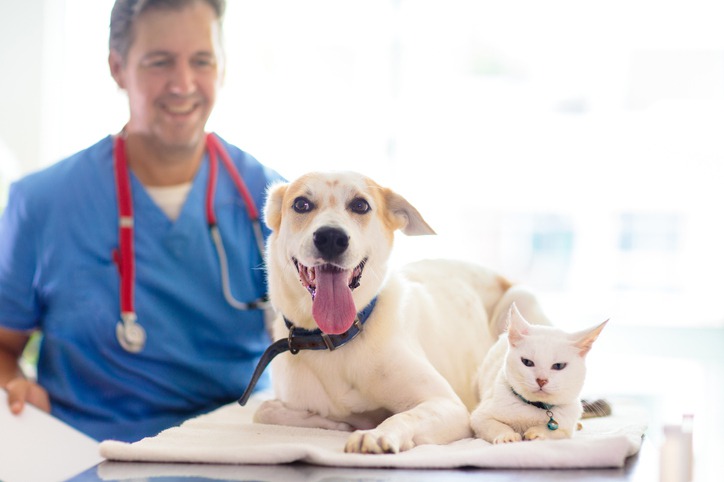As a pet parent, we all wish our furry friends could stay young and spry forever, but time spares no one, not even our beloved cats and dogs. Watching our pets can be tough, especially as they start to show signs that they aren’t the spring chickens or silly pups they once were. Knowing when to take an aging pet to the vet can make a significant difference in their quality of life. We’ve put together some advice to help you navigate these golden years with your four-legged family members.
Regular Check-Ups Are a Must
Much like humans, as pets grow older, the likelihood of health issues increases. Regular vet visits become crucial, and you might wonder just how often you should schedule these appointments. The answer is it depends on how old “old” is for your pet. Cats and dogs are generally considered seniors at around 7 to 10 years of age, but this can vary with size and breed. Here are a few guidelines:
-
Senior pets (7+ years old): Annual wellness exams are the bare minimum. For pets in this age group, twice-yearly exams are often recommended because they can catch potential health issues before they become major problems.
-
Geriatric pets: When your pets enter the geriatric stage, usually around the age of 10 to 15, visits might need to be more frequent. Your vet can help you determine the best schedule based on your pet’s specific needs.
Signs and Symptoms to Watch For
Between these regular check-ups, there are certain signs that warrant an immediate vet visit. Aging pets often develop conditions that could become serious if not addressed promptly. Keep an eye out for signs such as:
-
Sudden weight loss or gain
-
Changes in appetite or water consumption
-
Difficulty standing or walking
-
Noticeable shifts in behavior or mood
-
Difficulty breathing or coughing
-
Bad breath or other dental issues
These could indicate issues such as diabetes, arthritis, heart disease, or dental problems, all of which are more common in senior pets.
Why Dental Health Matters
One often overlooked aspect of pet health is their dental care. Senior pets are particularly prone to dental diseases, which can lead to other health complications if left untreated. Poor dental health can affect your pet’s heart, kidneys, and other organs. Veterinary dentistry services are specifically tailored to address these issues and can help extend your pet’s lifespan while improving their comfort. Don’t wait until your pet is pawing at their mouth or refusing to eat—preventive dental care is key.
Adapting to Their Needs
As pets get older, their needs change, and we, as pet parents, have to adapt to them. Aching joints may call for orthopedic beds while fading vision might require you to keep their environment as static as possible to avoid disorientation. Here are some common changes and adaptations you can make:
Nutritional Adjustments
Aging pets have different nutritional needs. They may require fewer calories, additional fiber, or supplements to support joint health. Consult with your vet to adjust your pet’s diet appropriately to maintain their ideal weight and support their aging body.
Exercise and Mobility
Senior pets still need exercise, albeit adjusted for their capability. Light walks, swimming, and gentle play can help keep them mobile and limber. If you notice they’re struggling with previously easy tasks, like climbing stairs or jumping onto furniture, consider ways you can make these easier, such as with ramps or steps.
Common Health Conditions in Aging Pets
As pets age, certain health conditions become more prevalent. Being aware of these can help you spot symptoms early and seek prompt treatment. Some of these conditions include:
-
Arthritis
-
Kidney disease
-
Cancer
-
Heart disease
-
Senility or cognitive dysfunction
Each of these conditions presents its own set of symptoms, but early detection and management can have a significantly positive impact on your pet’s quality of life.
When in Doubt, Check it Out
It’s better to be safe than sorry when it comes to pet health. If something about your pet’s behavior or appearance seems off, don’t hesitate to reach out to your veterinarian. It’s not uncommon for us to downplay symptoms or attribute them to normal aging, but sometimes, these are signs of underlying issues that should be addressed.
This is where we should learn more about geriatric pet care. Recognizing what is normal and what isn’t in an aging pet’s behavior and physical condition is key. Educate yourself on common ailments and their symptoms. Your vet is a valuable resource for this knowledge, so don’t hesitate to ask questions and seek advice.
Planning Ahead
Aging may be inevitable, but there are steps we can take to ensure our pets age gracefully and comfortably. Regular vet visits, a keen eye for changes in health or behavior, and adapting your home and care routine to meet their changing needs can all make a difference.
Don’t overlook preventive care like cat and dog vaccinations in Santa Clarita. Keeping up with vaccinations is still important for senior pets, as their immune systems can weaken with age, making them more susceptible to diseases they were vaccinated against in their youth.
Final Thoughts
When an aging pet’s behavior or habits change, it’s time to consult the vet. Waiting and hoping things might get better on their own can lead to discomfort or pain for your pet and potentially higher costs down the line if the problem becomes severe. Remember, vet visits for seniors are not only about treating problems but also about preventing them. With tender love, care, and attention, we can help our pets enjoy their golden years with the dignity and comfort they deserve.


